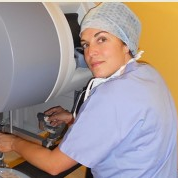Female Pelvic Medicine and Reconstructive Surgery
A special issue of Journal of Clinical Medicine (ISSN 2077-0383). This special issue belongs to the section "Obstetrics & Gynecology".
Deadline for manuscript submissions: closed (15 November 2022) | Viewed by 8028
Special Issue Editors
Interests: laparoscopy; robotics; minimally invasive surgery
Special Issues, Collections and Topics in MDPI journals
2. Kore University of Enna, 94100 Enna, Italy
Interests: gynecologic Oncology; V-NOTES surgery; uterine transplantation; pelvic reconstructive surgery
Special Issue Information
Dear Colleagues,
Pelvic organ prolapse is a prevalent disorder with a high lifetime incidence of surgical repair, its surgical treatment having greatly evolved over the past years with pelvic floor reconstructive surgeons now faced with a vast array of treatment options for their patients. Pelvic reconstructive surgery for POP can be subdivided into numerous different classifications and types of procedures, first being an anatomic classification by compartment (anterior, posterior and/or apical). The type of approach may be transvaginal or abdominal, with the latter feasibly performed by open, laparoscopic or robot-assisted laparoscopic techniques. If an apical prolapse is present, a decision as to whether or not to perform a hysterectomy must be determined. Finally, the reconstruction may be performed with or without mesh for added support, both through transvaginal and abdominal routes. In the present Special Issue, we present an overview of each technique, focusing our interest on the most popular and controversial current trends in pelvic reconstructive surgery as well as presenting the most recent approaches and techniques.
Dr. Liliana Mereu
Prof. Dr. Paolo Scollo
Guest Editors
Manuscript Submission Information
Manuscripts should be submitted online at www.mdpi.com by registering and logging in to this website. Once you are registered, click here to go to the submission form. Manuscripts can be submitted until the deadline. All submissions that pass pre-check are peer-reviewed. Accepted papers will be published continuously in the journal (as soon as accepted) and will be listed together on the special issue website. Research articles, review articles as well as short communications are invited. For planned papers, a title and short abstract (about 100 words) can be sent to the Editorial Office for announcement on this website.
Submitted manuscripts should not have been published previously, nor be under consideration for publication elsewhere (except conference proceedings papers). All manuscripts are thoroughly refereed through a single-blind peer-review process. A guide for authors and other relevant information for submission of manuscripts is available on the Instructions for Authors page. Journal of Clinical Medicine is an international peer-reviewed open access semimonthly journal published by MDPI.
Please visit the Instructions for Authors page before submitting a manuscript. The Article Processing Charge (APC) for publication in this open access journal is 2600 CHF (Swiss Francs). Submitted papers should be well formatted and use good English. Authors may use MDPI's English editing service prior to publication or during author revisions.
Keywords
- pelvic organ prolapse
- apical suspension
- mesh repair
- fascial repair
- biosynthetic and coated transvaginal mesh
- autologous tissue
- laser therapy
- reconstructive surgery
- urinary incontinence
- pelvic floor







